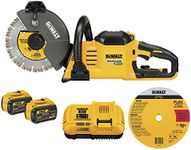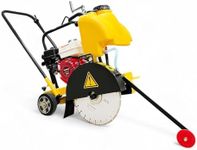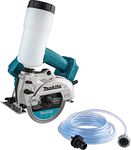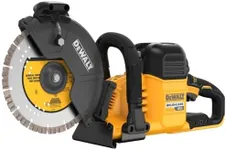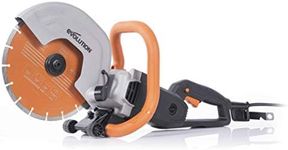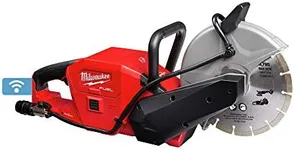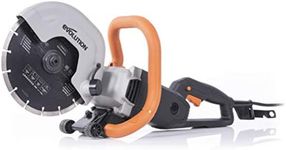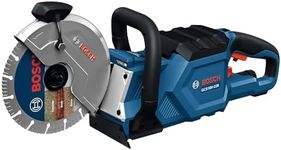Buying Guide for the Best Concrete Saws
Choosing the right concrete saw is all about matching the tool to your specific cutting needs. Whether you’re a DIY enthusiast or a professional, understanding the main features of concrete saws will help you make a smart choice. Think about the type of projects you’ll tackle, the thickness and hardness of the material, and how often you’ll use the saw. By focusing on the key specifications, you can find a saw that’s safe, efficient, and comfortable for your work.Power SourceThe power source of a concrete saw determines how it operates and where it can be used. The main types are gas-powered, electric, and battery-powered. Gas-powered saws are strong and portable, making them ideal for outdoor and heavy-duty jobs, but they are noisy and produce fumes. Electric saws are quieter and suitable for indoor use, but they need a power outlet and may have less cutting power. Battery-powered saws offer portability and convenience for smaller jobs, but their runtime is limited. Choose the power source based on where you’ll be working and the size of your projects.
Blade SizeBlade size affects how deep you can cut into concrete. Smaller blades (around 7-10 inches) are good for shallow cuts and lighter tasks, while larger blades (12-16 inches or more) can handle deeper cuts and tougher materials. If you mostly do small repairs or thin slabs, a smaller blade is easier to handle. For thick concrete or frequent use, a larger blade will save time and effort.
Cutting DepthCutting depth is the maximum thickness of material the saw can cut in one pass. Saws with shallow cutting depths (up to 3 inches) are suitable for tiles, pavers, or thin slabs. Medium depths (3-6 inches) work for most residential projects, while deep-cutting saws (over 6 inches) are needed for heavy-duty or commercial work. Match the cutting depth to the thickness of the concrete you’ll be working with most often.
Wet vs. Dry CuttingConcrete saws can be designed for wet or dry cutting. Wet cutting uses water to cool the blade and reduce dust, making it safer and extending blade life. Dry cutting is more convenient for quick jobs or where water isn’t available, but it creates more dust and can wear out blades faster. If you often work indoors or need to control dust, a wet-cutting saw is a better choice. For outdoor or occasional use, dry cutting may be sufficient.
Weight and PortabilityThe weight and portability of a concrete saw affect how easy it is to move and use. Lighter saws are easier to handle and transport, making them suitable for small jobs or frequent moving. Heavier saws are more stable and powerful, which is helpful for large or tough projects, but they can be tiring to use for long periods. Consider how much you’ll need to move the saw and how long you’ll use it at a time.
Vibration and ErgonomicsVibration and ergonomics refer to how comfortable and safe the saw is to use. Saws with good vibration control and ergonomic handles reduce fatigue and the risk of injury, especially during long jobs. If you plan to use the saw often or for extended periods, look for features that make it easier to hold and control.
